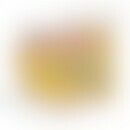HistoryThis section has been translated automatically.
.
DefinitionThis section has been translated automatically.
General biological (cell) phenomenon that leads to cells irreversibly leaving the pool of actively dividing cells. Cellular senescence leads to the permanent loss of the cells' ability to proliferate. Senescent cells are arrested in the G0/G1 phase of the cell cycle; they are no longer able to enter the S phase after mitogenic stimulation. The phenomenon was first described in 1961 by Hayflick and colleagues in human embryonic fibroblasts (the termination of cell division capacity is also known as the Hayflick limit in cell cultures). It is assumed that the senescence programme (like the apoptosis programme) behaves like a tumour suppressor and thus prevents tumour genesis. The most common biomarker is the senescence-associated β- galactosidase (SA-β-Gal), which accumulates in senescent cells.
ClassificationThis section has been translated automatically.
2 forms of cellular senescence are distinguished.
- Replicative senescence; telomere shortening (see below) is discussed as a triggering factor. It is assumed that reaching a critical length is a triggering moment for the initiation of the senescence program.
- Premature senescence; it can be induced acutely and is telomer independent. Different stress factors such as different types of stress are discussed as triggers. Oncogenic, reactive oxygen species ( ROS) or other stimuli that trigger DNA damage.
LiteratureThis section has been translated automatically.
- Jackson TR et al (2012) DNA damage causes TP53-dependent coupling of self-renewal and senescence pathways in embryonic carcinoma cells. Cell Cycle 12 PubMed PMID: 23287532.
- Stout GJ et al. 2013 Telomere length and telomerase activity impact the UV sensitivity syndrome xeroderma pigmentosum. Cancer Res PubMed PMID: 23288511.
- Tran SL et al (2012) Absence of distinguishing senescence traits in human melanocytic nevi. J Invest Dermatol 132:2226-2234



